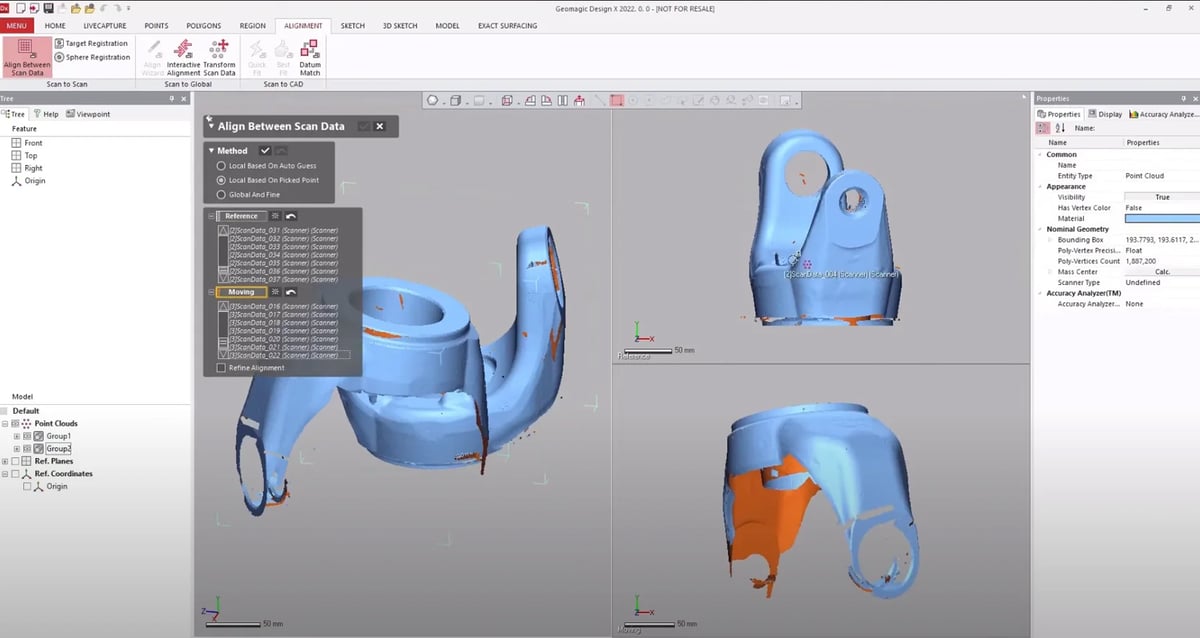3D printer manufacturer 3D Systems announced mid last month that it’s getting out of the 3D scanning software game by selling its very popular Geomagic reverse engineering, design, and inspection software portfolio to Hexagon for $123 million.
Geomagic has a strong user base in, among other things, the market for creating digital models from physical objects that can then be used to manufacture the finished component, in other words: reverse engineering. Other Geomagic products, include Design X (reverse engineering software), Control X (inspection and quality control software), Wrap (point cloud and mesh processing, Freeform (sculpting and organic modeling software), Sculpt (virtual sculpting software), and Geomagic for Solidworks (a reverse engineering add-in for CAD software Solidworks).
As a leader in scanning technologies, Hexagon says it is ideally positioned to harness the power of the Geomagic portfolio to offer a more complete scan-to-CAD workflow, to bridge the physical and digital worlds.
If you’re a Geomagics user, this is good news.
Drew Rogers, Hexagon’s VP of strategy & merger and acquisitions told All3DP that his company plans big investments into Geomagic, which will include new features to “improve interoperability with metrology standards and continued vendor-agnostic device and CAD software support.”

Users will also benefit from Hexagon’s global support in more than 50 countries and through both Geomagic and Hexagon partners.
3D Systems acquired Geomagic in 2013 as part of its strategy to expand capabilities in 3D scanning, reverse engineering, and inspection, which is largely viewed as an essential component of industrial 3D printing. Yet, 3D Systems never ventured into making scanning hardware, a now booming market.
Hexagon not only makes software and hardware but recently moved into handheld 3D scanning hardware, with its new Atlascan Max and Marvelscan, which are already compatible with Geomagics.
Will Hexagon make Geomagic proprietary to its hardware?
Rogers told All3DP that one of Geomagic’s strengths is that it works directly with many scanners on the market, such as Creaform, Evatronix, Faro, Shining3D, and Zeiss, and Hexagon has no intention of changing that. “Today, Geomagic software already works seamlessly with Hexagon’s scanner portfolio, so we can offer it as a bundle to customers with our … scanners and many other devices in our portfolio.”
With this acquisition, Hexagon is not only expanding its customer base but potentially adding new markets.
“Reverse engineering capabilities complement and enhance Hexagon’s existing capabilities,” says Rogers, “not just in metrology but across design, 3D printing and CAM workflows. Tools like Freeform bring exciting new and market leading technologies to Hexagon’s portfolio of products.”
Geomagic Freeform stands out due to its combination of haptic feedback, voxel-based modeling, and a focus on organic and artistic design. Its ability to seamlessly integrate engineering precision with artistic freedom makes it a powerful tool in fields requiring bespoke and intricate 3D designs. It’s widely used for designing prosthetics, dental appliances, and jewelry due to its ability to create highly customized and precise models.
Following the closing of the sale to Hexagon, 3D Systems says it will focus on its software platforms that are “core to customer adoption and application of its 3D printing technologies,” such as 3D Sprint, 3DXpert, and Oqton Industrial Manufacturing OS.
You May Also Like:
License: The text of "Hexagon Buys Geomagic From 3D Systems, Good News for Reverse Engineering" by All3DP Pro is licensed under a Creative Commons Attribution 4.0 International License.


